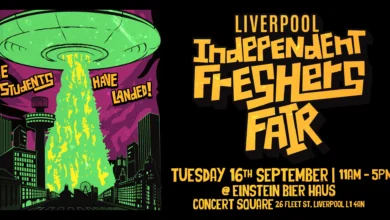
How Global Markets Influence Liverpool’s Art Scene
Liverpool is a bustling hub of art and culture, but this doesn’t exist in isolation. Its vibrant art scene is intimately connected with global economic trends. This article will explore the different ways that international monetary shifts can impact local art scenes like Liverpool’s and what things those running these art shows need to be aware of.
Art Donations and the Global Economy
Most art scenes around the world have historically relied on donations. Many of these organisations are non-profits and rely on the generosity of artists to donate artwork to be sold at events. When there are downturns in the economy, charitable giving can decrease, and this is also true of art donations. During times of prosperity, the opposite often occurs, and there’s an uptick in contributions.
Philanthropy can also play a crucial part in this dynamic. When the world economy thrives, philanthropic tendencies tend to surge — boosting arts funding significantly. International donors are often motivated by tax incentives, which make giving more appealing, and these can change given the state of the economy, too.
Comparatively speaking, Liverpool’s art scene holds its own against other major cities and is capable of weathering economic changes. It has a strong presence, and it’s deeply important to many people in the city who are willing to step up when needed, but these issues are still important to be aware of.
Sponsorships and Global Financial Health
Another way these organisations receive funding is through corporate sponsorships. Multinational companies investing in the art world can fuel significant growth and innovation for local artists, galleries, and exhibitions.
However, a slowdown in the economy can also lead to sponsorship agreements being cancelled or not being renewed. Companies might cut back on discretionary spending like arts funding as they tighten their belts to weather tough times.
International Events and Economics
Liverpool is a hub for international art events. Major events like the Liverpool Biennial and The John Moores Painting Prize attract worldwide attention, contributing to the city’s cultural significance on a global scale. Economic conditions like inflation — something the world is currently grappling with — can directly impact event budgets and attendance figures. Broader economic issues like this may also affect the planning and execution phases of these events.
Interestingly, some of these impacts can help local art scenes, too. When the economy is on a downturn or issues like inflation are rearing their head, people’s spending habits change. A simple example could be someone in Liverpool choosing to cancel their overseas holiday to save money and instead attend cheaper local events. This type of scenario could drive more locals through the door of art events.
Regardless of the global economic situation, it’s hard to see a world where Liverpool’s art scene doesn’t thrive. The community’s passion and innovation in shaping a dynamic artistic landscape are remarkable and place it in good stead for the future.







